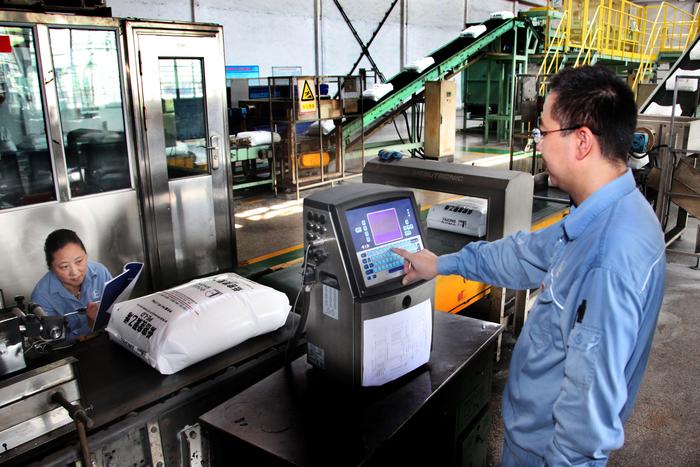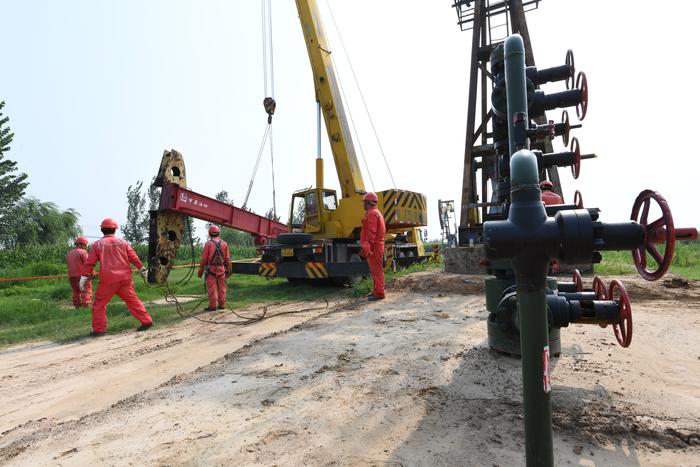|
| 2019-08-22 来源: |
| 石化新闻 |
|
中国石化新闻网讯 据普氏能源资讯8月21日报道,分析师预计,因为在截至8月16日的一周,美国陆上天然气产量激增,美国天然气储量将增加610亿立方英尺,比5年平均水平高出10亿立方英尺。 标普全球调查显示,对调查的反应范围从540亿立方英尺到650亿立方英尺不等。EIA计划在美国东部时间周四上午10点30分发布其每周库存报告。 610亿立方英尺的注资规模将超过去年同期470亿立方英尺的建设规模,以及5年平均510亿立方英尺的注资规模。在预期范围内的注资将使库存增至2.799万亿立方英尺。赤字相对于5年平均水平将下降至1010亿立方英尺,而截至去年的盈余将扩大至3710亿立方英尺。 由于美国石油产量在截至8月16日的一周内保持强劲势头,此次增产看来将超过此前一周,当时EIA报告称,将注入490亿立方英尺的天然气。 标普全球数据显示,美国陆上天然气日产量继续创下历史新高,东北部和东南部日产量较上周增加了30亿立方英尺,参考周的平均日产量为873亿立方英尺。较低的48个州的气温升高使电力消耗需求减少了约60亿立方英尺,而相应的住宅和商业需求增加了20亿立方英尺,抵消了部分影响。 本周四EIA报告的基本面仍不容乐观,但据报道,墨西哥政府和管道运营商本周已达成协议,将为供过于求的美国天然气市场提供一些亟需南下的出口产能,并在9月前支撑天然气价格。 数据显示,美国中西部地区将再次迎来本周最大的净注入量,达到310亿立方英尺。东部地区为第二高的240亿立方英尺。 由于8月份的强劲注入,中西部库存继续逼近5年平均水平。普氏数据显示,中西部库存目前为6660亿立方英尺,较去年水准高出逾700亿立方英尺,仅比5年平均水平低320亿立方英尺。 本月,美国中西部地区已注入约800亿立方英尺天然气,或约42亿立方英尺/天。这与5年平均每天37亿立方英尺的注入速度形成了鲜明对比。在夏季开始时,天然气注入比5年期指标低近800亿立方英尺,整个夏季都在加速,以缩小赤字。 普氏能源资讯上月公布的预估显示,10月中西部库存将为9540亿立方英尺,较上年同期增加逾500亿立方英尺。这将使中西部地区进入冬季时,有充足供应,特别是通过Nexus等管道从东北部输送更多的天然气。因此,芝加哥和其他中西部需求中心今年冬天的价格溢价预计将同比下降。 普氏早期预测显示,本周存储水平将增加570亿立方英尺,相当于5年来的平均水平。接下来的一周,天然气价格有望进一步下跌,而存储量将至730亿立方英尺。 邹勤 摘译自 普氏能源资讯 原文如下: US natural gas in underground storage set to expand by 61 Bcf: survey Analysts expect US natural gas in storage to increase by 61 Bcf, or 10 Bcf more than the five-year average, as onshore production surged during the week ended August 16. The US Energy Information Administration is expected to report a 61 Bcf injection for the week ended August 16, according to a survey of analysts by S&P Global Platts. Responses to the survey ranged for an injection of 54 Bcf to 65 Bcf. EIA plans to release its weekly storage report on Thursday at 10:30 am EDT. A 61 Bcf injection would be more than the 47 Bcf build in the corresponding week last year, as well as the five-year average injection of 51 Bcf. An injection within expectations would increase stocks to 2.799 Tcf. The deficit versus the five-year average would decrease to 101 Bcf and the surplus to last year would expand to 371 Bcf. The build looks to be more than the week prior, when the EIA reported a 49 Bcf injection, as US production remained strong for the week ended August 16. US Onshore production continued to set record highs, gaining 0.3 Bcf/d from the Northeast and Southeast week over week, averaging 87.3 Bcf/d for the reference week, according to S&P Global Platts Analytics. Warmer temperatures across the Lower 48 softened estimated power burn demand by about 6 Bcf, which was partially offset by a corresponding 2 Bcf gain in residential and commercial demand. Fundamentals for this Thursday's EIA report remain bearish, but the Mexican government and pipeline operators have reportedly reached an agreement this week that will provide some much-needed southbound export capacity for the over-supplied US gas market and support gas prices through September, according to Platts Analytics. Once again, the EIA's Midwest region is poised to post the largest net injection for the week at 31 Bcf, according to Platts Analytics. The East region should post the next highest build at 24 Bcf. Midwest stockpiles continue to close in on the five-year average inventory amid strong injections in August. Midwest inventories currently sit at 666 Bcf, which is more than 70 Bcf above last year's mark and only 32 Bcf less than the five-year average, according to Platts Analytics. The Midwest has injected roughly 80 Bcf this month, or about 4.2 Bcf/d. This contrasts with a five-year average injection rate of 3.7 Bcf/d. After starting the summer close to 80 Bcf below the five-year mark, injections have accelerated throughout the summer to narrow that deficit. A Platts forecast published last month anticipates Midwest inventories will finish October with 954 Bcf in the ground, more than 50 Bcf above last year. This will leave the Midwest well supplied entering the winter, especially with more inbound pipeline capacity from the Northeast via pipelines like Nexus. As such, price premiums at Chicago and other Midwest demand centers this winter are expected to be softer year over year. An early forecast by Platts Analytics shows storage levels increasing by 57 Bcf for the week in progress, which is equal to the five-year average. The following week looks to add an even more bearish build at 73 Bcf.
|








